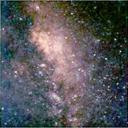Yahoo Answers is shutting down on May 4th, 2021 (Eastern Time) and beginning April 20th, 2021 (Eastern Time) the Yahoo Answers website will be in read-only mode. There will be no changes to other Yahoo properties or services, or your Yahoo account. You can find more information about the Yahoo Answers shutdown and how to download your data on this help page.
Trending News
How do they identify celestial objects?
I am wondering, how do they identify stars, galaxies, quasars, pulsars, and any celestial objects in space. i meant how can they tell which 2 stars apart, and correctly give their name? is that applicable only to perspective from earth?
Edit:
Let me clarify. Given two photos of two different stars, how does an astronomer tell them apart?
Edit: star maps. I realize that. but assuming that the observer is in say Betelgeuse system, and look at the stars, how will they know which star is, let's just say, Sirius?
Search First Before You Ask It, i realized that too, but that is only applicable on earth or near eayrth rite? is there another way where it is applicable to a system half way around the galaxy? i mean, a method that's independent of the position of the observer?
something like being shown a photo of earth and mars and immediately be able to tell which is earth, and which is mars. can the same be achieved with celestial objects?
6 Answers
- 10 years agoFavorite Answer
Surveys of the sky have been recorded over the course of several centuries. Objects are plotted by Right Ascension and Declination in a format analogous to latitude and longitude on the ground, except that the "longitude" is in 24 hours instead of 360 degrees since the earth rotates in 24 hours.
If the RA and DEC is known (and if the view or image has the direction of North known) then it is possible to identify stars previously plotted.
I recommend downloading the free planetarium software Stellarium. You will learn a thing or two.
---------------------------------------------------------------------------------------------
Added: Your additional details make for a completely different question. Some stars won't be visible hundreds of light years away. The Sun would not be visible without a telescope.
From Earth we can plot in 3d the nearest stars pretty well using parallax, up to a hundred light years or so. The closest stars have a measurable proper motion as well. That is, it's motion around the galaxy relative to our own sun. Spectroscopy can also measure radial velocity relative to us.
Beyond that, unless you have standard candles like Cepheid variable stars or type 1a supernovae a star's distance can only be approximated by its physical properties measured by spectroscope or by the presence of a companion star.
There are some other planetarium programs like Starry Night, I think, that will portray our solar system viewed from another star system. Not Stellarium though.
- AlanLv 710 years ago
From a photograph, no. they all look the same.
But in a telescope you compare its position to a star chart or read its co-ordinates from the telescope mount.
The word astronomy (astra = star, nomy = numbers) means writing down the star positions in a catalogue
Why would anybody show you a star photo? it's just a white dot!
Source(s): 50 years doing astronomy - 10 years ago
They have different machines and things which can measure their distance from earth, their radius, weight, amount of radiation being let off etc. So obviously if ones radius is 2000 miles, and the others 2200 miles then they can tell them apart.
- How do you think about the answers? You can sign in to vote the answer.
- Anonymous10 years ago
i think they can differentiate each star by how much radiation each gives off, brightness of each, size of each, and observing the patterns of it's movement.






